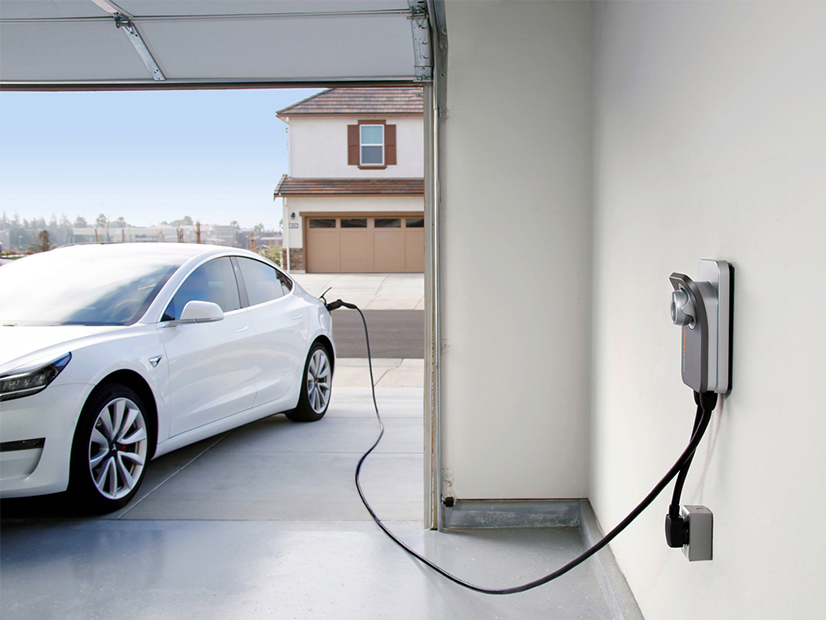
Ohio residents who buy electric cars face an annual $200 charge in addition to basic registration fees to make up for not paying 38.5 cents per gallon in motor fuel taxes.
The charge is one of the highest among the 20 states imposing the fees to make up for lost gas taxes used for road maintenance.
But it makes little sense in a state dependent on automobile and auto parts manufacturing, especially as the industry moves into EV manufacturing, argues a policy report issued Tuesday by the Citizens Utility Board of Ohio.
The ABCs of Ohio EVs: A Policy Guide to Electrify Ohio argues that electrification of transportation is happening whether Ohio lawmakers want it or not and that it’s already past time to begin building policies to encourage the transition in an orderly and rational manner.
At its core, the report argues that encouraging auto electrification could lower consumer electric rates because regulated utilities will be able to sell more power over the infrastructure now in place, a debatable contention.
“I would emphasize that the central point of this 28-page report really is that if we do this right, then everybody will benefit from the increasing penetration of electric vehicles whether they drive one or not,” said Martin Cohen, a principal of Martin Roth Cohen and Associates, an energy economics consulting firm that assisted in researching the report.
“There will be downward pressure on electric rates because we’ll have new volumes of electricity sold to charge these EVs at the same time, as [well as] cleaner air and less pollution,” Cohen said in a news conference announcing the report.
“The key is that we need to do this by using the existing infrastructure — generation, transmission, distribution — which we can do with the right policies and programs in place to use electric vehicle charging, which is a flexible load to fill in the valleys in demand for electricity.”
EV adoption will not increase the cost of the system, he added, and it will produce new revenue for the utilities, helping to lower or steady future rates.
Accelerating Adoption
The report also argued that widespread EV use is just around the corner — and not coming in the distant future.
In the first six months of 2021, the number of EVs registered in Ohio jumped from 14,530 to 28,595, rising to 1.72% of new car registrations, but still representing only one of every 300 registered passenger cars, according to the report.
That growth will accelerate, Cohen said. “EVs are really going to be a choice of consumers, which is why they’re going to mushroom. It’s not primarily because of policy.
“It’s because people like them, and they are so much cheaper to drive and have such low maintenance and so many improved performance characteristics over a comparable internal combustion vehicle that we do expect they are going to be very popular,” he said.
The report notes that GM alone plans to produce 30 new EV models by 2025 and only electric cars by 2035. “With the impending introduction of a new generation of EVs with higher ranges and lower costs, a tipping point toward mass market adoption appears to be on the horizon.”
GM assembles cars in Ohio and makes parts in the state, such as transmissions, an item not used in electric vehicles.
Thomas Bullock, executive director of CUB Ohio, said the anticipated growth of EV sales is set to accelerate. “We have 4.5 million cars on [Ohio] roads. When 20% are electric, we could see a 10% increase in overall electricity consumption. That can happen in as quickly as 10 years,” he said.
Bullock noted that AEP Ohio, a subsidiary of American Electric Power, took the first step toward direct utility involvement in EV charging last year in a rate case that included language authorizing EV rates for a limited number of charging stations.
However, the report appears to suggest that utilities should stick to selling power to EV charging companies rather than build the stations. In other words, it’s an issue that requires a comprehensive state policy and not one that can be addressed piecemeal in utility rate cases.
The report also opens a debate about whether state public utility commissions have the authority to develop EV charging policies without underlying rules crafted by state lawmakers. The Ohio legislature knocked down proposed legislation last year that would have lowered the $200 EV registration fee.
Bullock said the report will be sent to the Ohio PUC, the Ohio Consumers’ Counsel and the legislature. None were asked to participate in drafting the report.


